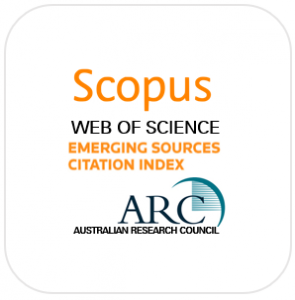Vol. 7, No. 1 (2011): 47–74.
Abstract
The case study of the “Temple of 18 Deities” demonstrates a row of stable Eurasian-Pacific religious symbols which were preserved in the Taiwanese religious cult. In the article, the author claims that the traces of those long-lived elements could be found in many other religions and cultures all over EurasiaPacific area, from Ireland to China, Taiwan and Oceania. In the paper, the “Temple of 18 Deities” origin mythology is analysed, the author’s fieldwork described, a set of stable symbols in the cult of 18 deities’ revealed, and researches devoted to Taiwanese and Chinese popular religion genesis overviewed. In the end, the traces of those symbols in mythologies of other cultures in Eurasia-Pacific cultural area are illustrated, main symbols common meanings analysed, and their origins and stages of transformation reconstructed. In the article on example of the 18 deities’ cult in northern Taiwan, the author observes how ideas, beliefs, and values were created and transmitted in religious cultures during the periods of cultural changes. The author suggests that invisible Eurasian-Pacific common cultural heritage is hidden under umbrellas of different variants of popular religions and superstitions in different cultural traditions all over Eurasia-Pacific, and the case of the Taiwanese 18 deities’ cult is an example of such heritage inside Chinese popular religion and folk Buddhism. The author also supposes that the important part of the Taiwanese 18 deities’ cult traces back to the period of the Austronesian speaking peoples’ dispersal in the Asia-Pacific area, where the ideas and artifacts were widely exchanged along the first trade routes, while the sea nomadic peoples were main actors of the exchange process.
Author’s bio
Igor Sitnikov is currently a PhD student in International Program of Asia Pacific Studies at National Chengchi University (Taipei, Taiwan). He was born in Ryazan (Russia) in 1961. For 30 years, he lived in the Soviet Union, where in 1984 he graduated from Ryazan Fine Arts College with specialty “Painter and Fine Arts Teacher”; then living in Russian Federation in 2002, he graduated from the Moscow State University of Culture and Arts on specialty “Management in Social Sphere” and passed the professional retraining in the program “Noncommercial Organizations Economics.” Since 2003, he lives in Taipei, where he studied Mandarin and then in 2009 graduated from the International Master’s Program in Taiwan Studies at National Chengchi University. Starting from the Taiwan Studies, his research interests concentrated in the field of cultural anthropology and in its subfields such as anthropology of religion, folklore, and mythology in the vast geographical area of Eurasia and Asia-Pacific.
Download

